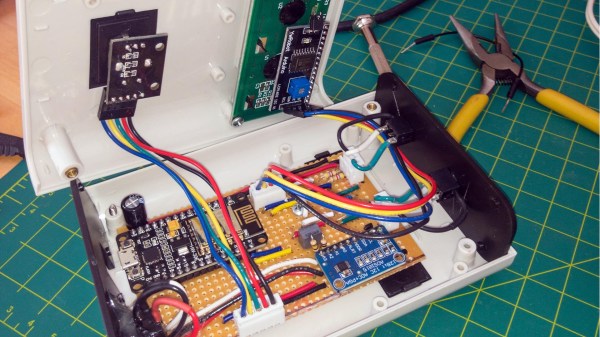Did you know that backyard barbecues now come with WiFi? It should be no surprise, given the pervasiveness of cloud-enabled appliances throughout the home. However [Carl] wasn’t ready to part with his reliable but oh-so-analog BBQ smoker, so instead he created an affordable WiFi-based temperature monitor that rivals its commercial counterparts.
 Accurate temperature measurement is essential to smoking meat from both a taste and safety standpoint. In this project, two Maverick ET-732/733 thermistor probes take care of the actual temperature monitoring. One probe is skewered into meat itself, and the other measures the ambient ‘pit’ temperature. Combined, these two gauges ensure that the meat is smoked for exactly the right length of time. [Carl] mentions that adding an extra temperature sensor is trivial for larger setups, but he’s getting by just fine with two data points.
Accurate temperature measurement is essential to smoking meat from both a taste and safety standpoint. In this project, two Maverick ET-732/733 thermistor probes take care of the actual temperature monitoring. One probe is skewered into meat itself, and the other measures the ambient ‘pit’ temperature. Combined, these two gauges ensure that the meat is smoked for exactly the right length of time. [Carl] mentions that adding an extra temperature sensor is trivial for larger setups, but he’s getting by just fine with two data points.
Naturally an ESP8266 does most of the heavy lifting in bridging the gap between smoke and cloud. At the core of this project is utility and practicality – temperature statistics can be viewed on any device with a web browser. Being able to study the temperature trends in this way also makes it easier to predict cooking times. Electronic alerts are also used to notify the chef if the temperature is too hot or cold (among other things). The entire contraption is housed in a smart looking project box that contains an LCD and rotary encoder for configuration.
If this has piqued your culinary interest, check out the extensive documentation recipe over on GitHub and the project Wiki. We also recommend checking out this project that takes automated meat smoking to the next level.




















